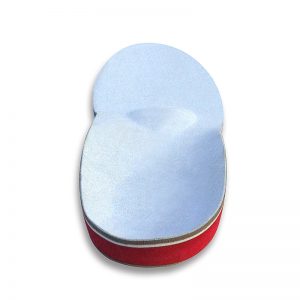A rather rigid, controlled form of support is essential when selecting an orthotic for an overweight/obese patient to help counterbalance the considerable stresses produced on the lower extremities by heavy weights. Long-term shock absorption is also essential for reducing excessive load on the articular cartilage and slowing degenerative processes. Because orthotics that are not worn are the least beneficial, comfort is also a consideration.
Many chiropractors have discovered that the best orthotic for obese patients is a compromise orthotic: one that is firm but flexible, has plenty of arch support, and includes shock-absorbing materials in the rear foot area. A soft, pleasant top layer should be combined with solid support in the ideal orthotic.
All physicians who treat obese patients with low back pain and lower extremity difficulties should consider combining chiropractic care with supportive orthotics, rehabilitative strengthening and stretching exercises, and nutritional, weight-loss, and shoe-fitting counseling. This “bundle” of modalities and instruction will, in many situations, result in a more successful and long-term clinical outcome.

